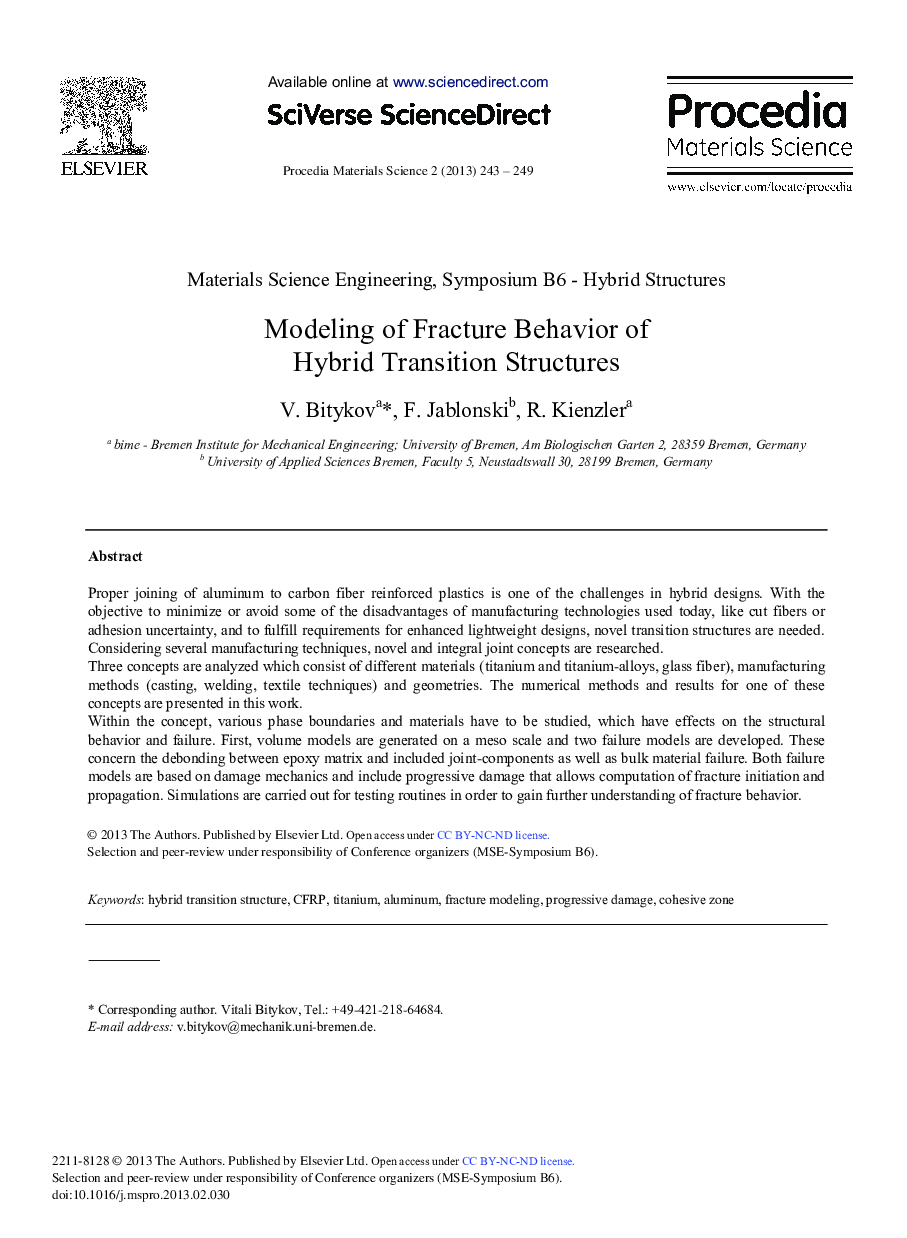| Article ID | Journal | Published Year | Pages | File Type |
|---|---|---|---|---|
| 1634285 | Procedia Materials Science | 2013 | 7 Pages |
Proper joining of aluminum to carbon fiber reinforced plastics is one of the challenges in hybrid designs. With the objective to minimize or avoid some of the disadvantages of manufacturing technologies used today, like cut fibers or adhesion uncertainty, and to fulfill requirements for enhanced lightweight designs, novel transition structures are needed. Considering several manufacturing techniques, novel and integral joint concepts are researched.Three concepts are analyzed which consist of different materials (titanium and titanium-alloys, glass fiber), manufacturing methods (casting, welding, textile techniques) and geometries. The numerical methods and results for one of these concepts are presented in this work.Within the concept, various phase boundaries and materials have to be studied, which have effects on the structural behavior and failure. First, volume models are generated on a meso scale and two failure models are developed. These concern the debonding between epoxy matrix and included joint-components as well as bulk material failure. Both failure models are based on damage mechanics and include progressive damage that allows computation of fracture initiation and propagation. Simulations are carried out for testing routines in order to gain further understanding of fracture behavior.
